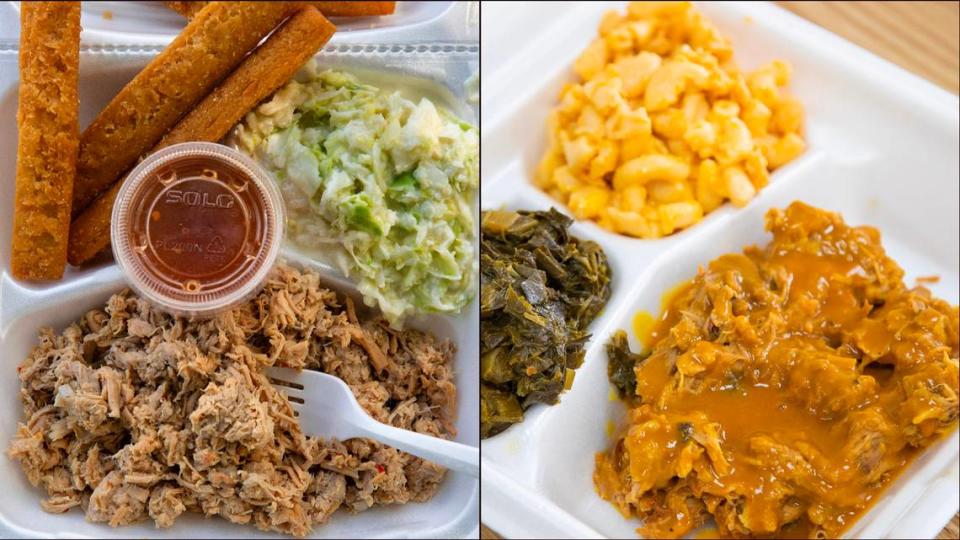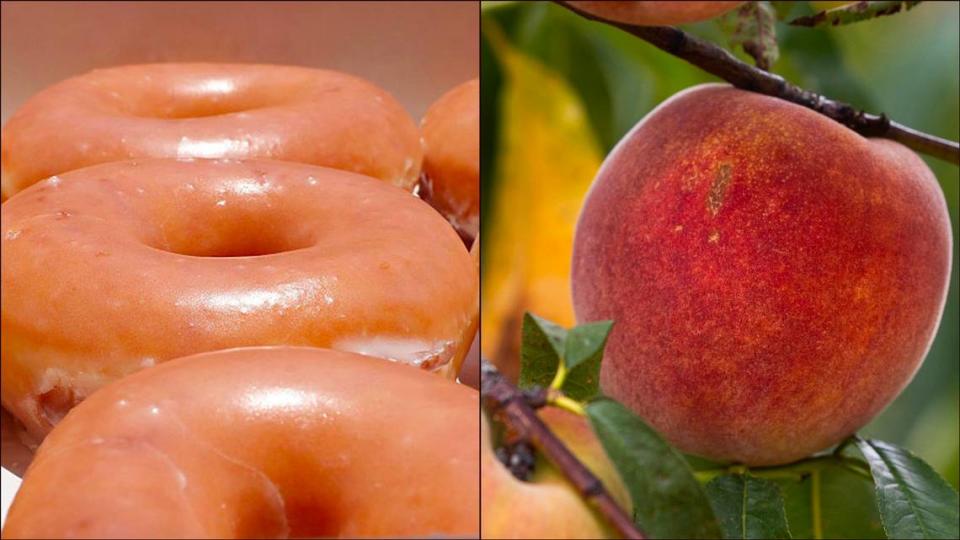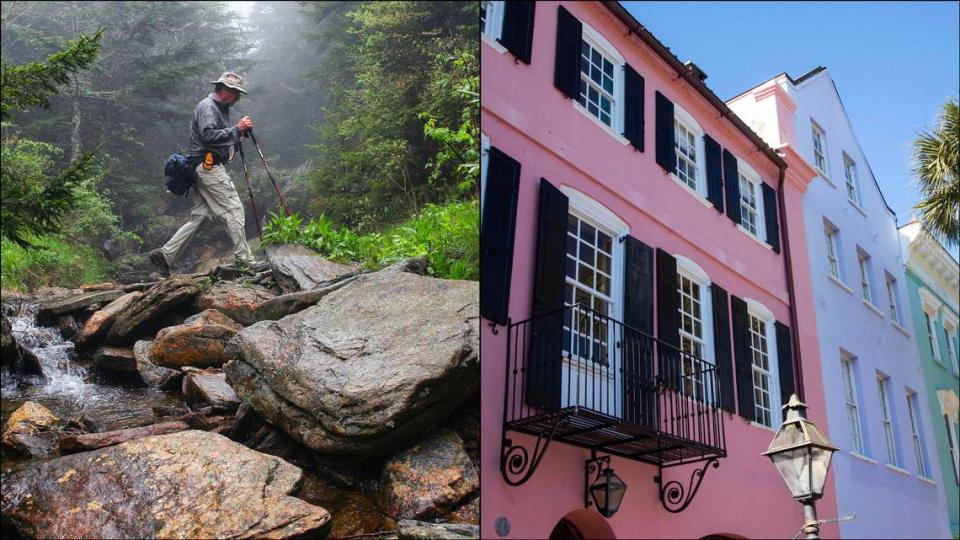North Carolina vs. South Carolina? Off the field, NC’s the best
The Tar Heels and the Gamecocks don’t play each other often enough to sustain a hot-blooded rivalry like the ones UNC has with Duke and NCSU, especially since USC stuck its lip out and left the ACC in 1971.
But the UNC-USC game in Charlotte on Sept. 2 gives us a chance to celebrate the good sense our colonial forbears showed in dividing Carolina into North and South, and to revel in how well we fared in that deal.
We don’t like to brag, so here are just a few of the ways North Carolina is better than South Carolina, no matter what happens on the football field.
South Carolina’s scrappy chicken mascot
Both states’ flagship universities have to explain the origins of their mascots on their websites, but only USC fields one with a criminal history.
Gamecocks — scrappy, ill-tempered chickens — were trained for barbaric fights on which 19th-century gamblers placed bets.
USC points out that cockfighting “is still legal in some parts of the world,” though even South Carolina banned it in 1887.
Meanwhile, UNC’s beloved Carolina-blue-horned ram, named Rameses, is fierce and non-felonious.

Borders make good barbecue
Splitting Carolina in two was an amicable, if lengthy, process conducted in the first half of the 18th century primarily to make for easier governance of a vast geographic region.
But in the mid-1700s, the border between the two colonies proved an important barrier to the northward flow of mustard toward our pristine pork barbecue.
During that time, South Carolina enticed thousands of German Protestants to settle in the new colony with promises of free land and homesteading provisions. These newcomers brought with them the taste of home — mustard — which they applied liberally to the slow-cooked pork locals offered them.
Mustard sauce is now a hallmark of South Carolina barbecue, though traditional vinegar- and tomato-based sauces are still in the mix. On this side of the state line, barbecue preference is an uncomplicated, either/or question settled before children get to middle school: Eastern or Western style? Mustard is for hot dogs.
South Carolina does have one redeeming condiment, and since Duke’s Mayonnaise is sponsoring the UNC-USC game it would be impolite not to acknowledge it.
Duke’s was created by Eugenia Duke of Greenville, S.C., in 1917, the company says, to spread on the sandwiches she sold to Army canteens for soldiers serving in World War I. Food writers say it has more egg yolks than other store-bought brands, making it creamier, and touches of vinegar and paprika give it a distinctive twang.

Them’s bitin’ words
South Carolina is a major peach producer and, thanks to African traditions, people there know how to cook a fine mess of collards with chicken stock, onion, garlic and smoked ham or turkey.
The combination of shrimp and grits was supposedly invented in Charleston. But that dish was perfected in North Carolina at the former Crook’s Corner restaurant in Chapel Hill when Chef Bill Neal added cheese, bacon, mushrooms and scallions.
South Carolina has the nation’s only large-scale tea plantation, but North Carolina was the birthplace of Pepsi-Cola and Cheerwine, and — speaking of sweet — we’re the largest producer of Muscadine wine.
Krispy Kreme and Lance Crackers originated in North Carolina, along with Mount Olive Pickles and Texas Pete. South Carolina lays claim to the world’s hottest pepper, the Carolina Reaper, developed by Smokin’ Ed Currie at his PuckerButt Pepper Co. in Rock Hill. But that’s not a food, it’s a fire hazard.

Who calls North Carolina home?
Both Carolinas have birthed important writers, actors, artists, athletes and musicians but North Carolina’s per capita production of over-achievers is higher.
▪ From the Palmetto State: Dizzy Gillespie, James Brown, Eartha Kitt, Darius Rucker, Andie McDowell, Viola Davis, Althea Gibson, Aziz Ansari, Chubby Checker, Larry Doby, Jim Rice, Alex English, Beth Daniel, Cale Yarborough, David Pearson, Vanna White, Jesse Jackson, “Shoeless” Joe Jackson, Francis Marion, Joe Frazier, Edwin McCain, William “The Refrigerator” Perry, Strom Thurmond, Chadwick Boseman, Marian Wright Edelman, Kevin Garnett, Mary Louise Parker and Chris Rock.
▪ Tar Heels: Libba Cotten, John Coltrane, Doc Watson, Rhiannon Giddens, Clay Aiken, Roberta Flack, Ben. E. King, Ronnie Milsap, Thelonious Monk, Maceo Parker, Max Roach, Earl Scruggs, Nina Simone, Andy Griffith, Billy Graham, Ava Gardner, Thomas Wolfe, Ben Vereen, David Brinkley, Howard Cosell, Charles Kuralt, Edward R. Murrow, Dale Earnhardt, Dale Jarrett, Meadowlark Lemon, Fred “Curly” Neal, Sugar Ray Leonard, Richard Petty, James Worthy, Roy Williams, Charles Frazier, Tom Robbins, Clyde Edgerton, Doris Betts, Fred Chappell, Zach Galifianakis, Scotty McCreery, Julianne Moore, Evan Rachel Wood, Phil Ford, Tori Amos, Eric Church, Shirley Caesar, Roman Gabriel, Jim “Catfish” Hunter, Luke Combs, Ariana DeBose, Chris Paul, Randy Travis and Reynolds Price.

A nice place to visit, but…
For 11 years straight, readers of Travel & Leisure magazine have named Charleston the No. 1 city in the U.S.
You spill a box of Crayons into a paint bucket, or drop some shrimp and fresh corn into the same pot where you’re cooking red potatoes, people think you’re an artist.
Fine. We’ll give them the historic architecture, the cobblestone streets, the smell of Old Bay seasoning (and poop from the Belgian draft horses that pull those tourist carriages). We wouldn’t deny South Carolinians the charm of Charleston because really, it’s all they have.
Especially since 2006 when the centerpiece of Myrtle Beach was demolished for redevelopment. The historic Pavilion, where a million doomed romances took flight, was torn down and replaced with volleyball courts, and the 11-acre amusement park across the street was demolished for a parking lot. A few of the rides were sent off to spend their sad final years outside a shopping center while parts of the roller coaster that once threatened to sling riders into the Atlantic were sold for scrap. At least the boardwalk and some of the Gay Dolphin’s gift coves are still there.
If it breaks your heart to see your summer memories of sketchy carnival rides and tacky T-shirts have been un-homed, come to a North Carolina beach and make some better ones.
The Tar Heel state has 300 miles of beaches, many of which are protected from development in perpetuity. You want ‘50s kitsch? Visit Carolina Beach’s oceanside arcade. Like to fish? We have 18 ocean piers. From Corolla to Sunset Beach, N.C. coastal communities offer every kind of accommodation along with great food and entertainment.
We also have the mountains, including Mount Mitchell, which tops out at 6,684 feet above sea level, dwarfing South Carolina’s Sassafras Mountain by more than 3,100 feet.

South Carolina has an aquarium. North Carolina has four.
Along the Black River in Southeastern North Carolina are some of the oldest trees known to man, the bald cypress. One tree has been dated at 2,624 years old.
In South Carolina, there’s the poor old Angel Oak, a 300-plus-year-old live oak tree whose massive, gnarled branches reach to the ground.
It looks like it’s trying to grow feet and get out of there.
We’re pulling for it.

